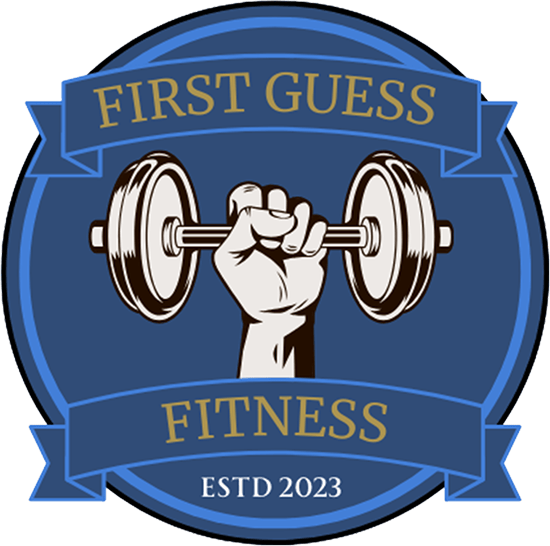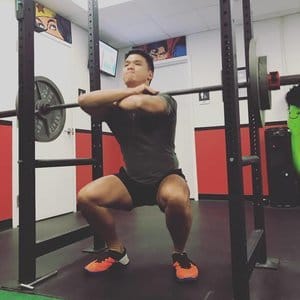So you’ve been working out and have gotten some results. Maybe you’re a little leaner or stronger or generally more fit…
Or maybe you just started working out and are starting to get the hang of things.
But then progress starts to slow down and you second guess if you need something more challenging to keep the #GainzTrain going. You’re worried that you’re not doing enough to and start to ask yourself these questions:
How hard should I be working out?
Am I working out too hard?
Do I always have to go H.A.M.?
Is this thing on?
All good questions and are ones we commonly hear as experts. I’m going to share a few of the strategies we typically introduce to our members to help them gauge their intensity from week to week to get the best possible fitness results that are totally sustainable.
1. How Does It Feel?
One of the easiest ways to gauge your intensity is to go by your own feels. No, not the emotional kind (But those are important, too!) but rather your own perception of how hard you’re working. This is known as auto-regulation (fancy trainer word alert) and uses the RPE (rate of perceived exertion) scale which rates how you’re feeling on a scale of 1 to 10.
Basically, a ‘1’ on the scale would basically be Netflix and chill and a 10 would be you couldn’t possibly work any harder or lift any more weight. RPE can be used for both gauging how hard you’re working in general OR how hard you’re working in a specific exercise.
Using the RPE scale for a specific exercise can easily be done by judging how many reps you have left in the tank (we’ll talk about that next). Here are some basic guidelines:
10 RPE = you might not be able to get the prescribed number of reps
9 RPE = you can do the prescribed number of reps but no more
8 RPE = you can do the prescribed number of reps and possibly one or two more but that’s it (see reps in the tank)
7 RPE = you can do the prescribed number of reps and possibly two to four more but that’s it (see reps in the tank)
You ge the idea.
1. Ability to judge how you’re feeling each workout. Progress isn’t always linear and it helps to be able to gauge intensity on a workout to workout basis. It would be nice to pick up more weight each time you workout but it’ just not feasible. Allowing yourself to adjust intensity will keep you making progress over the long term.
2. Discover your technical failure. Learning where your technique breaks down will help you safely train in a range that works best for you. Improving your technique and preventing your technique from breaking down is potentially more important than just increasing the weights/reps during each exercise. #TechniquePR
3. Knowing when to rest and recover! When you start to notice weights that are typically a 6 or 7 on the RPE scale feeling like their an 11 or a 12….it’s time to REST. Our bodies are complex and even though we may feel ‘fine’ our strength and fitness levels will dip when stress accumulates.
At AMP, we encourage members to use a moderate intensity (6 or 7) on the RPE scale for new programs or when they’re new to training. Mid-program they can turn it up to a 7 to 8 as they get accustomed to the program and exercises. Then, IF they’re feeling good, going hard AF for the last week.
NOTE: The following week would be a new training program and they would bring it back down to a 6 or 7 to recover.
Who’s it good for?
It can be difficult for some people to know when to challenge themselves or when they’re working too hard but for most people this is a good strategy. Understanding how to rate your exertion is a great skill to master and will help you understand when to crank it up or when to dial back intensity.
2. Leaving Reps In The Tank
One of our favorite ways to help our members adjust intensity is to guide them towards stopping a set just shy of technical failure (eg before form goes to crap). We call this ‘leaving reps in the tank’ and it can be used on any exercise where a moderate amount of repetitions are used, typically between 1 and 12ish.
You may have noticed that we’re actually telling you to NOT finish a set to your ability. Yes, we know you can finish more reps and, no, we’re not taking it easy on you because we don’t think you’re capable. It’s actually the opposite and we want you to get BETTER!
“Just because you can, doesn’t mean you should!”
1. Leaves you room to grow. If you’re always going HAM (hard as a mother funker) it makes it difficult to continue to get better every time you train. Strategically leaving a few reps at the end of a set will give you a little more wiggle room to come in the following week and GET 1% BETTER.
2. Better recovery. One of the best ways to aid in recovery between workouts is to not absolutely push yourself to the edge of each set/workout. If you’re recovering faster you can train more frequently, do more cool shit outside the gym, and generally just feel better. I hope you’re nodding your head to those things because RECOVERY IS EVERYTHING.
3. Reduced risk of injury. Rule #1 at First Guess Fitness is DON’T GET HURT. If you’re injured because you’re going too hard or not allowing your body to recover it makes it hard to stay consistent with your fitness goals. We’ve found that you CAN get exceptional results by not destroying your body every time you train.
If you’re still working on understanding where your technique breaks down or where you will hit technical failure, this won’t be super accurate. It’s still a great approach but we would recommend spending a bit more time nailing technique.
Who’s it good for?
This tends to work best for intermediate or even beginner trainees who have a good understanding of the fundamentals and are in tune with with how reps should feel.
This is also a GREAT strategy to use in both personal training AND small group classes since you get to control the intensity.
3. Percentage Based Training
Some training programs will wave intensity based on percentages of your training ‘max’. This is typically your 3-rep or 1-rep max for the heavier lifts that require more loading like barbell squat, bench press and deadlift.
Yes, it requires a bit of math and knowledge of max lifts but the rewards can be great for long term training goals.
1. It’s predictable. It provides you with concrete numbers to shoot for and structure to your training process. It takes a lot of the guesswork out of the ‘How much should I lift today?”, question.
2. See progress on paper. I’ve found that many Type-A humans LOVE this type of data entry since you get to see the numbers. You know what they always say: what get’s measured, get’s managed.
3. Variable training loads. Most percentage based programming has varying loading schemes that have you lifting at lower percentages on some days. This allows you a clear way to ramp up at the beginning of a program and recover at the end of a program. This is great to aid in injury prevention and longevity.
It’s important to note that this approach isn’t always accurate to someone’s ability like it is for perceived exertion or leaving reps in the tank. Also, a percentage-based program could greatly under or overestimate someone’s ability.
Who’s it good for?
Percentage based training tends to work better for stronger lifters/athletes, mostly because the maths are more accurate with bigger numbers. For example, 250lbs or 50% of a 500lb deadlift is more accurate of a training load than 50lbs or 50% of a 100lb deadlift. It’s also great for people who love numbers and tracking things.
If you’re just getting started or just training to improve your fitness abilities, burn all the fats and generally feel good then the RPE or Leaving Reps In The Tank methods may be better.
Wrapping It Up
Being able to understand how hard you’re working in the movement and adjust is a SUPER beneficial skill on your path to better health and fitness. With more than one way to gauge intensity, you’ll have to discover what will work best to lead you towards fitness glory and the best possible results for your goals.
What’s your next step? Explore each of these methods while you train to gain mastery over your body and nail your training intensity!
Not sure where to start? Let our coaches help design a training program and clear path for you to get started and stay started!
Steve is co-founder and head coach of First Guess Fitness, downtown Boston’s most inclusive personal training studio. His background is in posture, performance, injury prevention and strength development and packaging fitness in a way that is accessible to everyone. He’s a brand new father, an avid reader and enjoys nerding out to science fiction.









